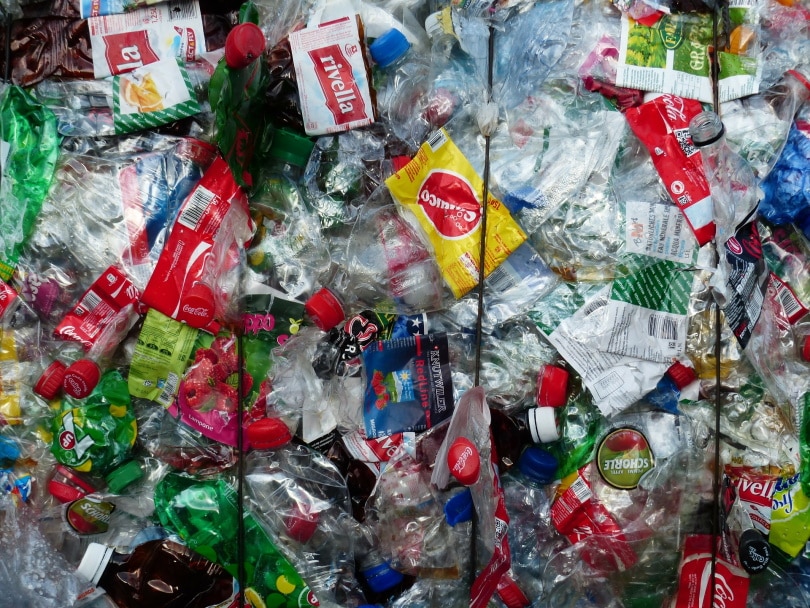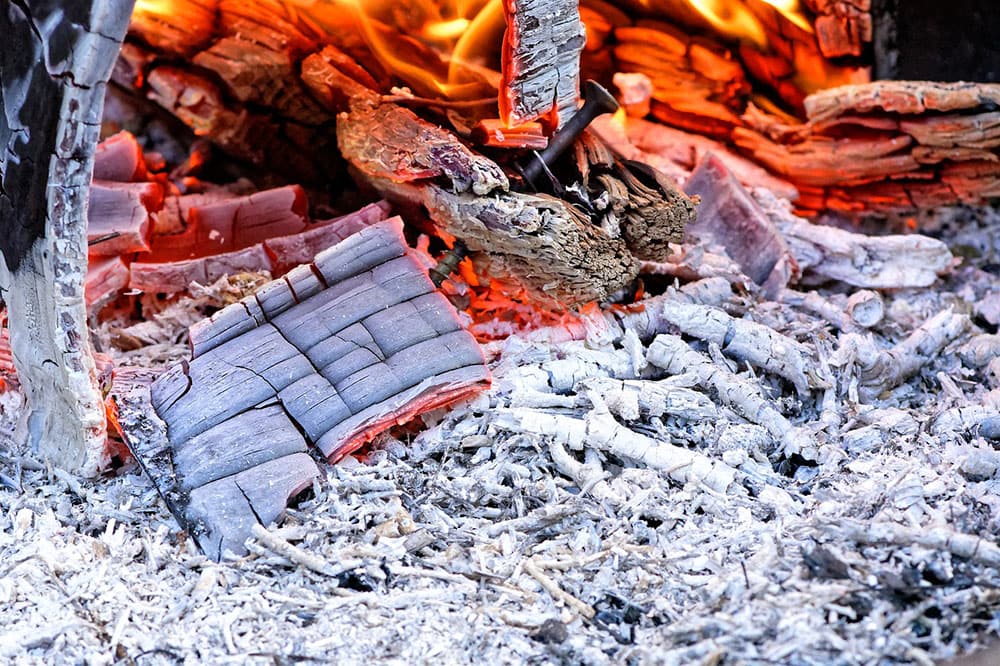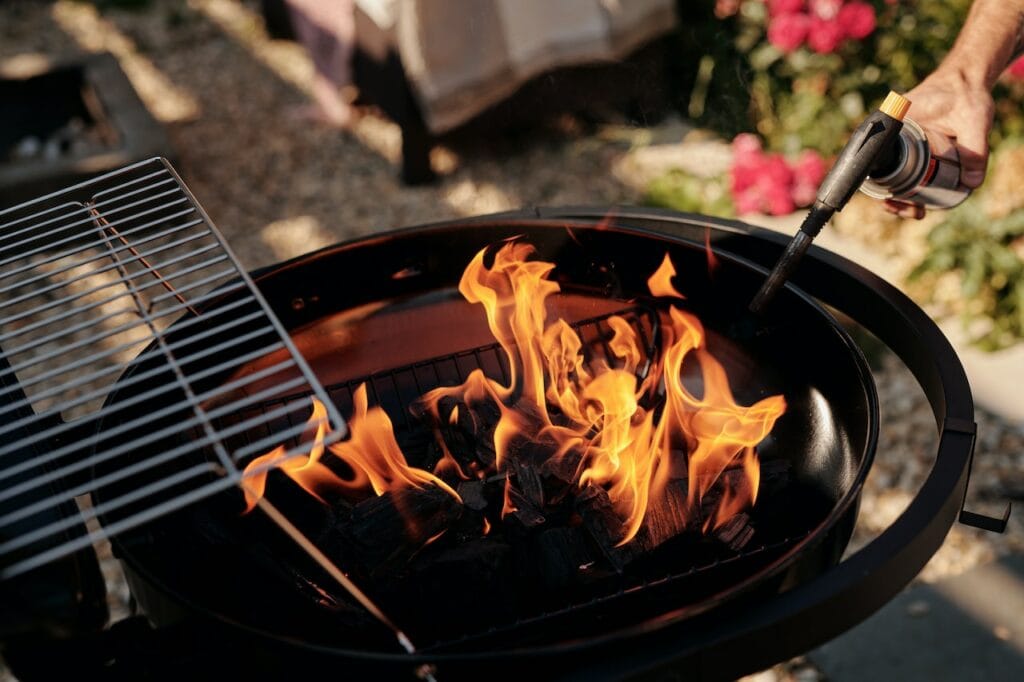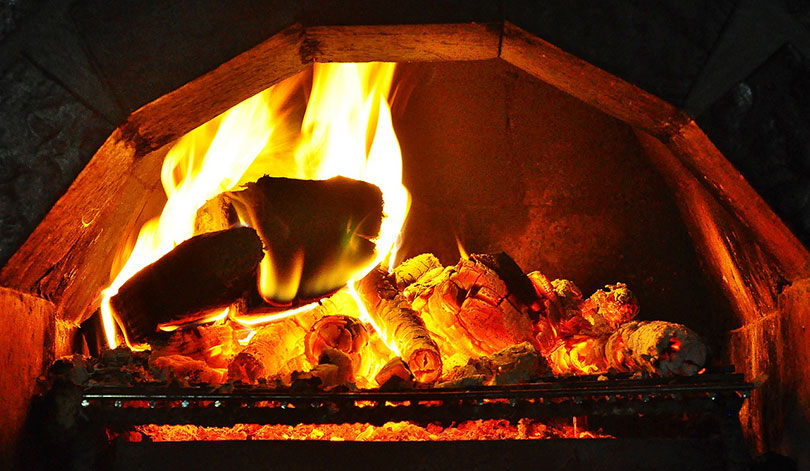Can You Burn Cardboard? Facts & FAQ
-
Jeff Weishaupt
- Last updated:

Whether you need something to burn in your backyard fire pit or trying to be more eco-friendly by recycling cardboard instead of throwing it away, you might wonder if it’s safe to burn cardboard. Is it safe to burn cardboard? No. It is not safe to burn cardboard.
This guide will cover the safety concerns of burning cardboard, how to burn it safely, and some alternative uses for your used cardboard. Keep reading to learn more.
 Is It Safe to Burn Cardboard?
Is It Safe to Burn Cardboard?
While cardboard is made of paper and paper products, which are safe to burn, the glue and other chemicals used to make cardboard can give off harmful fumes when burned. The fumes from burning cardboard can contain toxins like carbon monoxide and dioxins. When inhaled, these toxins can cause serious health problems like headaches, dizziness, and even death.
In addition to the fumes, burning cardboard can create a lot of smoke. The smoke from burning cardboard can irritate your lungs and cause problems like bronchitis and pneumonia.
Cardboard is also relatively lightweight. Thus, if a half-burned piece of cardboard were to fly out of your fire pit, it could quickly start a house fire.
You might think you’re being eco-friendly by recycling your cardboard instead of throwing it away. However, burning cardboard is not a safe or effective way to recycle it.

What Is Cardboard Made Of? Are These Materials Harmful?
You might think cardboard only comprises paper, but in actuality, it is made of multiple layers of paper and other materials. The top and bottom layers are usually made of paperboard, while the middle layer is made of corrugated material. Cardboard boxes also have the following materials.
- Wax Coatings: The top and bottom layers usually have a layer of wax. It helps to make the cardboard more water resistant.
- Polyethylene: Polyethylene is a type of plastic. It is often used to coat the outside layer of cardboard, making the cardboard more durable and less likely to tear.
- Adhesives: Adhesives are used to bind the different layers of cardboard together.
- Inks and Dyes: Inks and dyes are used to print designs or logos on the surface of the cardboard.
Therefore, when you burn cardboard, you’re not only releasing the paper fibers into the air, but you’re also releasing other harmful chemicals. These chemicals can enter the air and eventually make their way into the soil and water, where they can cause serious environmental problems.
For instance, dioxins can leach into the soil and contaminate crops. They can also enter the water supply and eventually end up in the food chain.
PCDDs and PCDFs are two types of dioxins that are often released when burning cardboard. These chemicals are persistent organic pollutants, meaning they can stay in the environment for long periods of time and eventually build up in the food chain. In this way, they enter the food we eat, causing health issues down the line.
What Happens When You Burn Cardboard?
When you light a piece of cardboard on fire, it will burn quickly and produce black smoke. The smoke will contain toxic chemicals that can be harmful to your health if inhaled. If the fire is not put out quickly, it can spread to other materials and cause damage to property or even loss of life. Soot and ash from burning cardboard can also be a health hazard.
Cardboard is made from wood fiber and is full of cellulose. When cellulose is heated, it breaks down into carbon dioxide and water vapor. Carbon dioxide is a colorless, odorless gas that is not toxic. However, the water vapor can condense and form small droplets of acid.
These acid droplets can be harmful if you inhale them. In addition, the smoke from burning cardboard can also contain other chemicals, such as carbon monoxide, hydrogen cyanide, and dioxins.
Dioxins are a group of chemicals that are known to cause cancer. They can also cause other health problems, such as skin rashes, liver damage, and congenital disabilities.

What Else Should You Never Burn in a Fireplace or Pit?
Besides cardboard, there are a few other things you shouldn’t burn in your fireplace or fire pit. They include:
Plastics
Although it’s known that plastics are among the most harmful substances to the environment, many people still burn them in fire pits and fireplaces. Unfortunately, when you burn plastics, they release toxins and carcinogens into the air, which can be very harmful to your health.
Dioxins are the most harmful chemicals released when plastics are burned. They’re linked to cancer, reproductive problems, and developmental issues.

Painted or Treated Wood
Treated wood mostly has chromatic copper arsenate, which can be very toxic when burned. Arsenate is composed of arsenic acid. Anyone exposed to high levels of this can experience health problems such as cancer, skin lesions, and circulatory issues.
Boxes with Colored Paint
Pizza boxes, cereal boxes, and magazines are a huge no-no in fireplaces. The paints and inks used on these boxes can be very toxic when burned. They release harmful chemicals such as lead, mercury, and cadmium into the air, harming your health.
You’re not only putting your health at risk but are also harming the environment when you burn these things. If you must burn something in your fireplace or fire pit, ensure it’s only natural wood.
 Frequently Asked Questions
Frequently Asked Questions
What Happens If You Breathe in Burnt Cardboard?
The chemicals released from burning cardboard can be harmful, especially to children and the elderly. Short-term exposure may cause coughing, sore throat, and difficulty breathing. In more severe cases, it can lead to bronchitis, pneumonia, and even cancer.

At What Temperature Does Cardboard Ignite?
Cardboard burns at over 400 degrees Celsius (752 degrees Fahrenheit). However, cardboard’s ignition temperature (the temperature at which a substance catches fire) is much lower. So, with just a little bit of heat, around 200 degrees Celsius (392 degrees Fahrenheit), the cardboard will begin to smolder.
Is Cardboard Toxic to Breathe?
Yes, the synthetic chemicals released from burning cardboard can be harmful. Long-term exposure to cardboard fumes can result in severe medical conditions.

Is Cardboard a Fire Hazard?
Cardboard is a fire hazard because it is a combustible material. It can catch fire and burn quickly when exposed to heat or flames. Corrugated cardboard catches fire and burns very rapidly.
Can You Recycle Burnt Cardboard?
No, you cannot recycle burnt cardboard. The fire will have damaged the cardboard beyond repair, and it will not be able to be recycled.

Can Burning Cardboard Cause Creosote?
Creosote is a black, oily substance that can build up on the inside of your chimney. It is a by-product of burning wood and can be very dangerous. For example, if you burn cardboard in your fireplace, it can release creosote into your home, which can harm your health.
How Should I Recycle Cardboard?
Burning cardboard is not the way to go. Instead, the best way to recycle cardboard is to take it to your local recycling center. There, it will be sorted and made into new products. Or you can recycle it at home by breaking it down and using it as mulch or compost.
 In Conclusion
In Conclusion
It is never a good idea to burn cardboard in a fire pit or fireplace. Burning cardboard can release harmful chemicals into the air, including carbon monoxide, dioxins, and furans.
These chemicals can be harmful to your health, and they can also pollute the environment. Other materials you should never burn in a fire pit or fireplace include plastics, painted wood, and pressure-treated wood.
So, what can you do with all that cardboard? You can recycle it, of course! Many local recycling facilities accept cardboard, and some even offer pick-up services. You can also repurpose it into something new, like turning old boxes into storage bins or using cardboard tubes to make fun crafts.
- https://www7.nau.edu/itep/main/HazSubMap/docs/Burning/SWAN_HealthEffectsOfBurningTrash.pdf
- https://blackgoose.com/what-can-i-burn-in-a-fireplace-wood-stove/
- https://www.ecoredux.com/burning-paper-cardboard
- https://www.doctorflue.com/blog/fireplace-safety-tips-what-not-to-burn/
- https://www.afandpa.org/news/2018/heres-how-recycle-your-cardboard-boxes
Featured Image Credit: stux, Pixabay
Contents
 Is It Safe to Burn Cardboard?
Is It Safe to Burn Cardboard? Frequently Asked Questions
Frequently Asked Questions